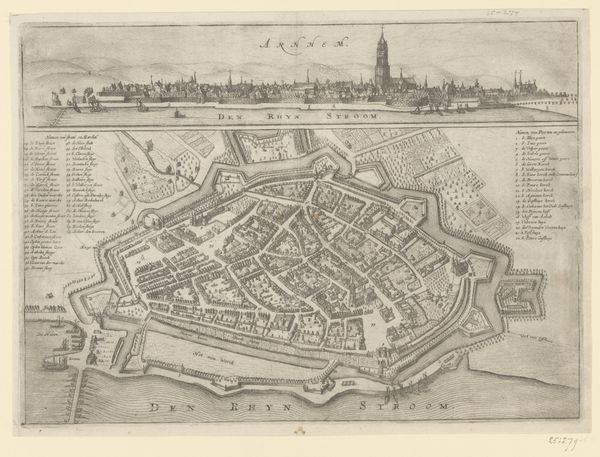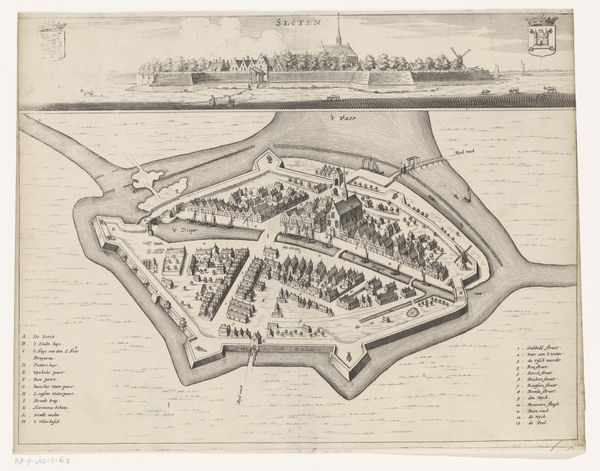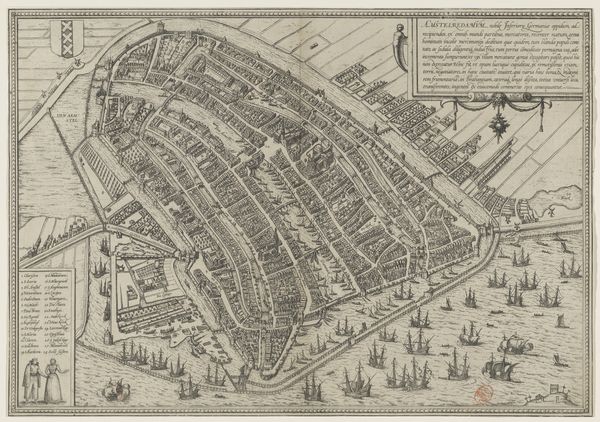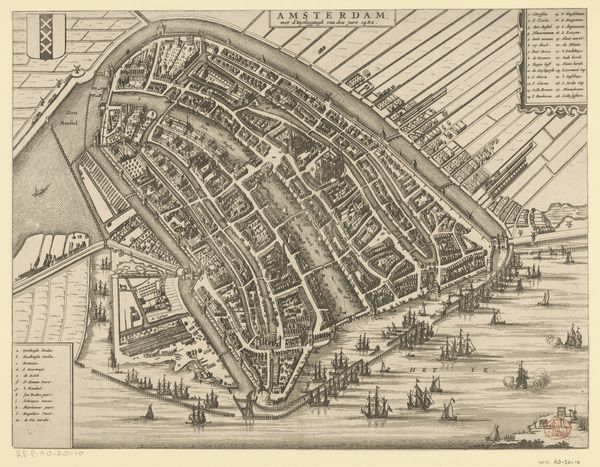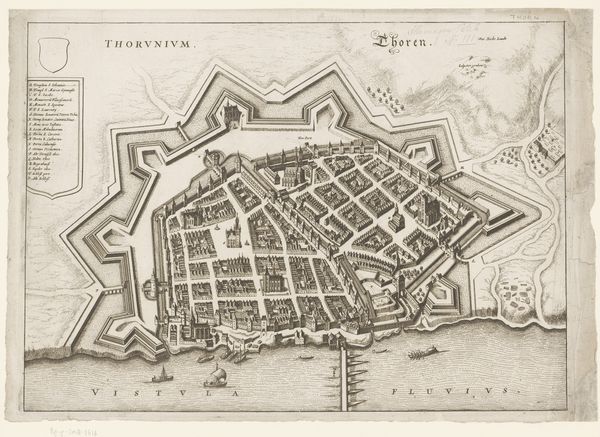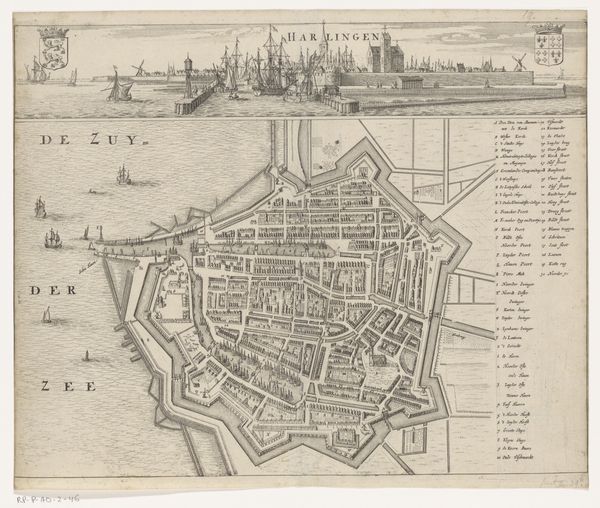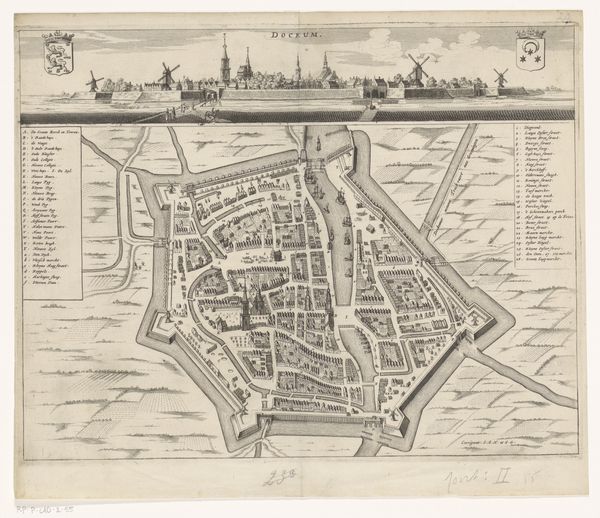
print, paper, engraving
#
dutch-golden-age
# print
#
paper
#
geometric
#
line
#
cityscape
#
engraving
Dimensions: height 287 mm, width 367 mm
Copyright: Rijks Museum: Open Domain
Jacob van Meurs’s print, produced sometime in the mid-17th century in the Netherlands, depicts the city of Sneek in plan view, complete with a cityscape along the top. In it, we see not just a picture of a place, but also a statement about the economic and political power of Dutch cities during the Golden Age. The carefully rendered layout, fortifications, and notable buildings are not merely descriptive. They emphasize the order and prosperity of a burgeoning mercantile center. Prints like these served a social function, bolstering civic pride and projecting an image of strength to both residents and outsiders. To fully understand this image, we can consult period maps, city archives, and studies of Dutch urbanism. What we find is that artworks are more than just aesthetic objects; they are embedded in the social, economic, and institutional contexts of their time, reflecting and shaping the values of the society that produced them.
Comments
No comments
Be the first to comment and join the conversation on the ultimate creative platform.
